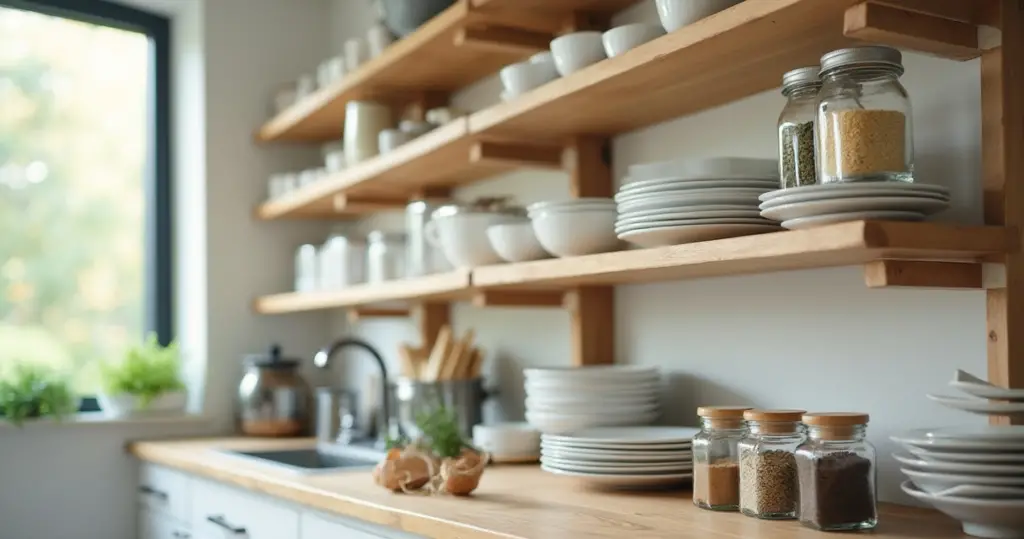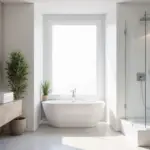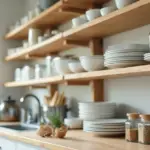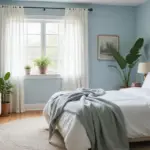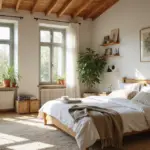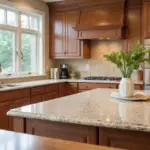Picture this: You’re standing in your kitchen, the real heart of your home. The morning light is catching the leaves of a basil plant on a shelf next to your favorite coffee mugs. Instead of just being a storage space, your shelves are an active part of your life—holding herbs you can snip for dinner, cookbooks stained with memories, and beautiful, useful objects that bring you joy. This isn’t a sterile showroom; it’s a living ecosystem that nourishes you, body and soul.
People always ask me how they can get that beautiful, curated look they see online without it feeling staged or impossible to maintain. They want shelves that look amazing but also work for a real, busy life. The secret is to stop thinking of your shelves as static displays and start seeing them as dynamic parts of your home’s ecosystem. It’s about finding that perfect harmony between what’s beautiful, what’s useful, and what’s alive. Forget the noise about buying all new matching sets. Let’s talk about what actually matters.
The Practical Start: Planning & Structural Considerations
Before you even think about arranging a single pot, we have to talk about the foundation. This is the ‘good soil’ for your shelves. Getting the structure, placement, and materials right from the beginning saves you so much headache later and ensures your beautiful, productive display is safe, functional, and built to last.
1. Prioritize Essential Items Before Styling for Clarity
You know those picture-perfect shelves where it looks like no one actually lives there? That’s the biggest piece of BS in home decor. Your shelves need to work for you. Before you place a single decorative object, figure out what you use every single day. I’m talking coffee mugs, your go-to spices, the olive oil, the small bowls you grab for snacks. These are your non-negotiables.
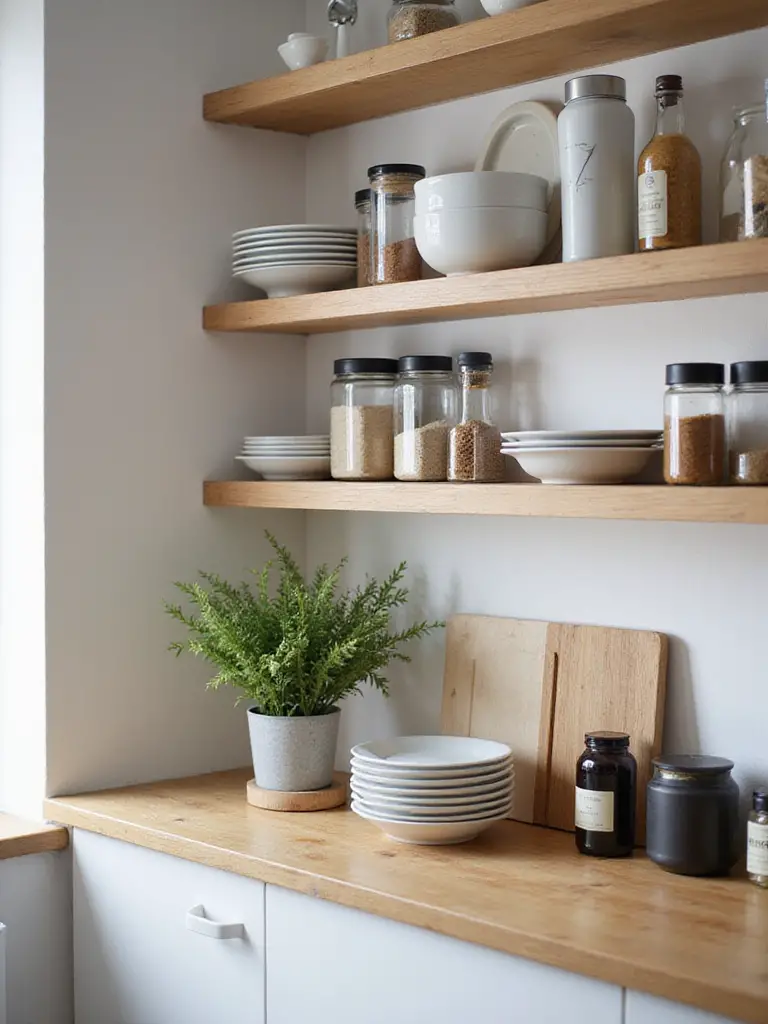
Giving these essentials the prime real estate—within easy reach of where you’ll use them—is the single most important thing you can do. It’s not just about being tidy; it’s about flow. It’s about not having to get a step stool when all you need is the salt. When your shelves are functional first, the beauty feels authentic, not forced. It becomes an honest reflection of how you live in your kitchen.
Think of it this way: your shelves are an extension of your countertop and your hands. They should support your daily rituals, making them easier and more joyful, not just look good for a photo.
2. Optimize Shelf Height for Both Beauty and Practicality
Can we talk about “standard height”? It’s a myth, or at least, it’s not the whole story. The right height for your shelves is the one that works for your body and your life. Sure, there’s a typical 18-20 inches of clearance above a counter, which is a great starting point to fit your blender. But what about the shelf above that one? Is it just for stuff you never touch?
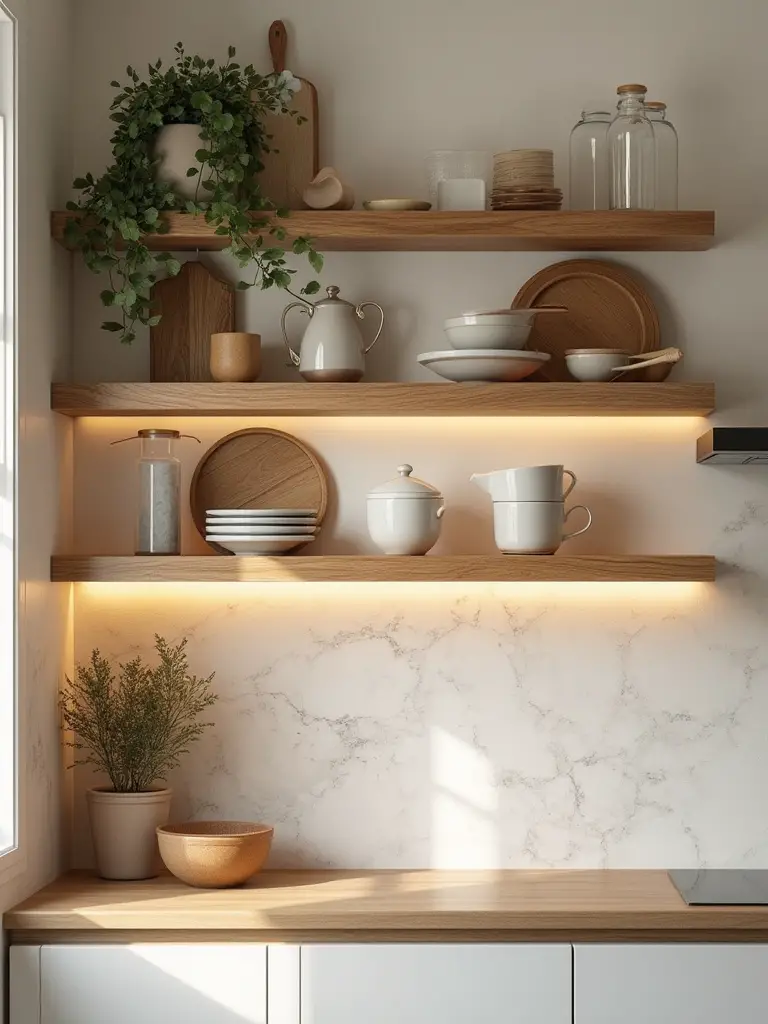
I once had a client, a young family, who was frustrated because the kids were always asking for their cups. We installed one lower, sturdy shelf just for them. The kids could get their own water, put away their own plates, and it completely changed the dynamic in the kitchen. Your shelves should serve the people in your home. Maybe that means a higher shelf for your fancy glassware and a lower one for your sprouting jars so you can easily rinse them every day. Measure your tallest cookbook. Measure your kid. That’s how you find the right height.
So forget the one-size-fits-all approach. Think about who uses what, and when, and design a system that makes life feel just a little bit more seamless for everyone.
3. Select Durable Materials for Long-Lasting Shelf Support
I used to think any old piece of wood would do for a shelf. Then I helped a friend install some cheap MDF floating shelves right above their kettle. Within six months, the steam had made them swell and sag so badly they looked like they were frowning. It was a perfect, if sad, lesson: kitchens are harsh environments. They’re full of moisture, heat, and grease, and your shelf materials need to be able to handle it.
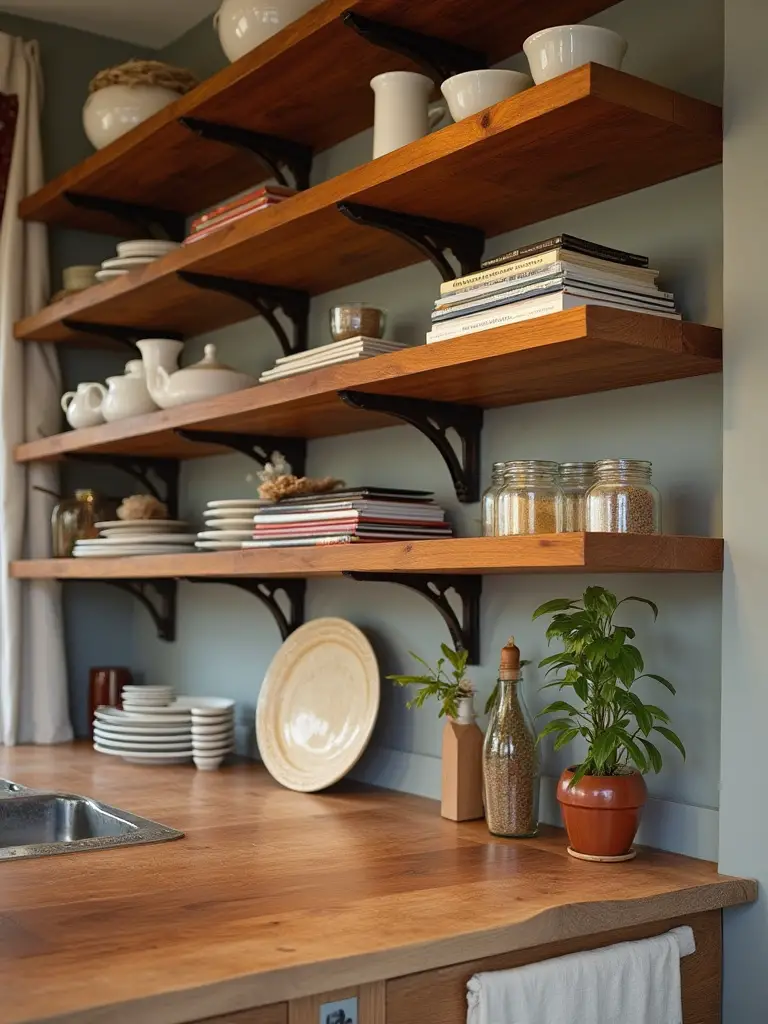
Choosing durable materials isn’t just about long-lasting support; it’s about sustainability. Opting for solid, reclaimed wood, sturdy stainless steel, or thick, high-quality plywood means you’re investing in something that will serve you for years, not something that will end up in a landfill. Think about what you’re storing, too. A stack of ceramic dinner plates or a couple of cast-iron pans is heavy! Your shelf material and its brackets need to be up for the job, anchored securely into studs.
This is the behind-the-scenes work that makes everything else possible. A beautiful display on a sagging shelf is just a disaster waiting to happen.
4. Create a Cohesive Color Palette for Unified Shelf Appeal
People get really intimidated by color palettes, but it’s simpler than you think. You don’t need to go out and buy a bunch of new things in three approved colors. Your color palette is already in your kitchen, living and breathing. It’s the deep green of your herb pots, the warm terracotta of your planters, the rich brown of a wooden cutting board, the white of your everyday bowls.
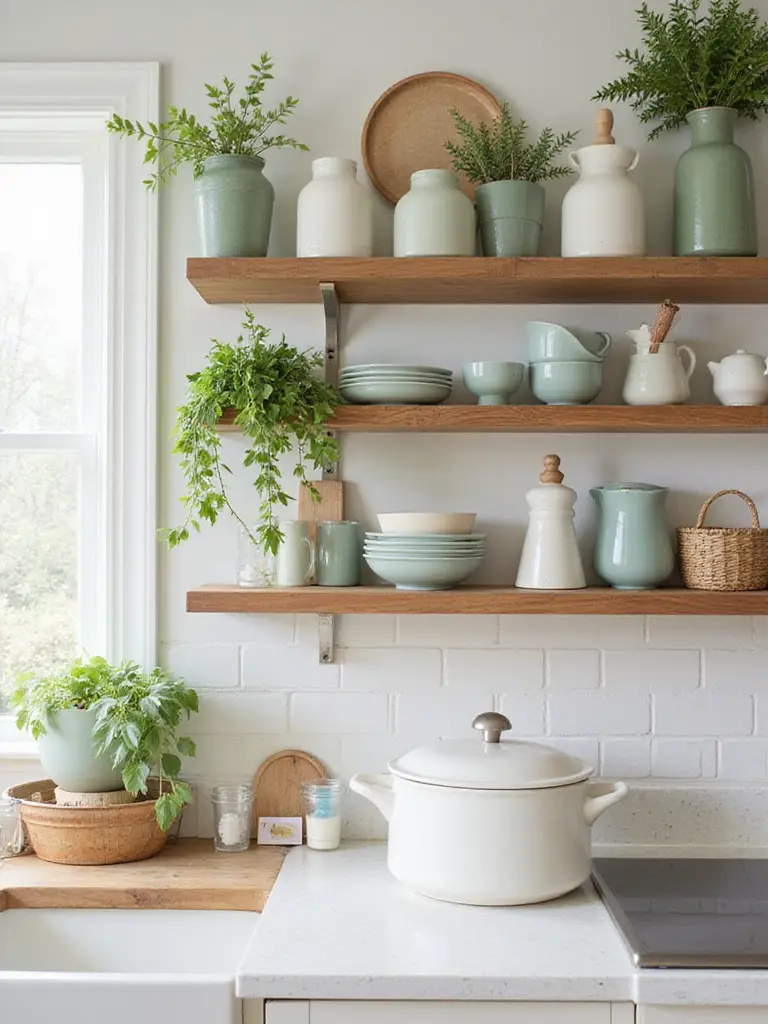
Look at the things you already own and love, and let them guide you. The idea is to create harmony, not uniformity. Group the warm tones together—the woods, the baskets, the amber glass. Let the cool tones play off each other—the stainless steel, the gray stoneware, the blue-tinted glasses. It’s about arranging your existing items so they sing together instead of shouting over each other.
A simple shortcut is to build your foundation on neutrals—white, wood, glass, metal—and then introduce just one or two accent colors through things that are easy to change, like a colorful utensil crock or a stack of bright linen napkins.
5. Assess Lighting Options to Enhance Shelf Displays
Lighting is where the magic happens. It can take a perfectly nice shelf and make it a breathtaking focal point. But in a living kitchen, lighting isn’t just for showing off your pretty pottery; it’s also a tool for productivity. A well-placed light can make a huge difference in your daily life.
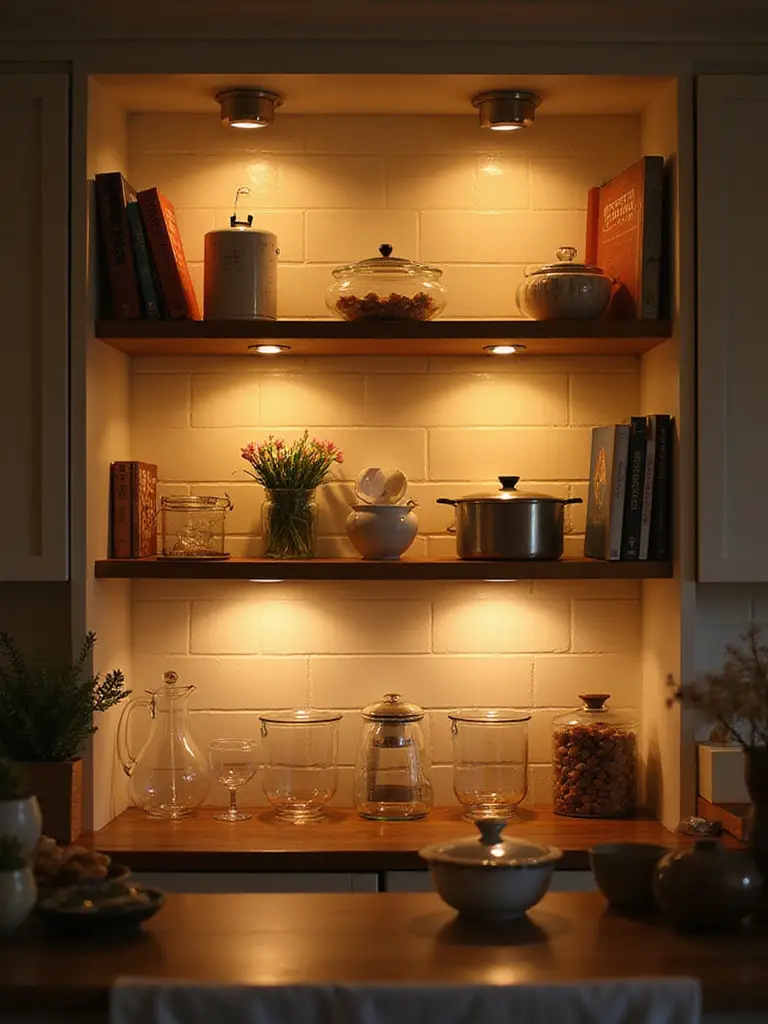
I am a huge fan of using under-shelf lighting for this. A simple LED strip can wash your counter in bright, useful light for food prep, making chopping safer and easier. But the best part is that it also casts a beautiful, soft upward glow that grazes the items on your shelf, giving them depth and dimension. And for my fellow urban farmers, a small, discreet grow light can be integrated to give your herbs the boost they need to thrive, turning your shelf into a tiny, productive farm that just happens to be gorgeous.
So think of lighting as having two jobs: one is to make your display beautiful, and the other is to make your space more functional and, yes, even more alive.
Strategic Storage: Balancing Function with Aesthetics
Okay, so we’ve built a solid foundation. Now let’s get real: not everything you own is beautiful. We all have that half-empty bag of pretzels or that weird-shaped appliance we only use twice a year. The art of a beautiful kitchen isn’t about getting rid of all that stuff; it’s about being smart about what you show and what you hide.
6. Integrate Closed Storage to Minimize Visual Clutter
This is my official permission slip for you to not display everything. In fact, the secret to beautiful open shelving is having really good closed storage nearby. Cabinets, drawers, and pantries are your best friends. They are the calm, quiet backdrop that allows the personality on your open shelves to truly shine.
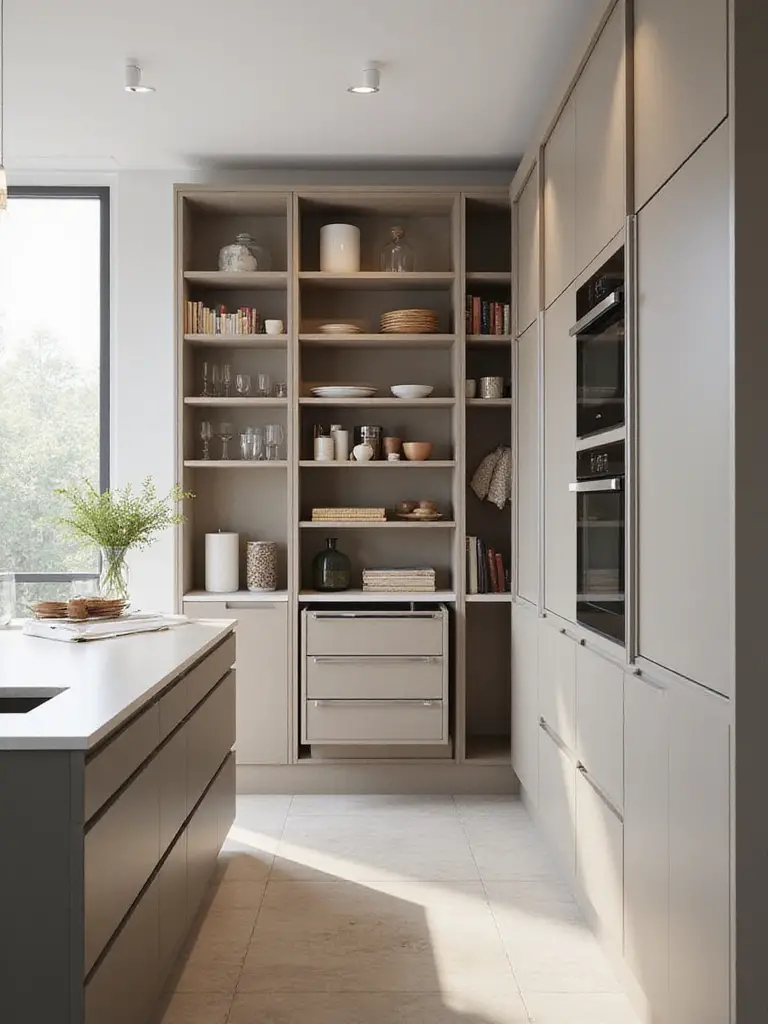
Think of it as editing. Your open shelves are for the stars of the show: the beautiful, the useful, the beloved. The supporting cast—the mismatched Tupperware, the bulk bags of rice, the vitamin bottles—can live happily behind closed doors. By consciously deciding what to hide, you give the items you choose to display so much more power and visual impact. Your kitchen will instantly feel more serene and organized.
A well-organized cabinet is just as important as a well-styled shelf. One simply cannot exist in a state of zen without the other.
7. Mix Everyday Essentials with Decorative Accents Artfully
This is the core philosophy of a living kitchen shelf. There shouldn’t be a hard line between “useful” and “beautiful.” A well-designed French press is a piece of sculpture. A clear jar filled with colorful lentils is a decorative object. A thriving pot of chives is a centerpiece. The art is in seeing the beauty in your everyday items and placing them with intention.

I learned this the hard way when I tried to maintain a “perfect” decorative shelf that had nothing I actually used on it. It just collected dust and felt lifeless. The minute I swapped out the useless tchotchkes for my favorite ceramic mugs, a beautiful wooden salt cellar, and a pot of thyme, the whole corner came alive. It finally had a purpose beyond just looking nice.
So arrange your everyday plates in a neat stack. Put your favorite olive oil in a beautiful ceramic cruet. Let your functional items be the art, and then just sprinkle in one or two purely decorative things, like a small plant or a tiny framed photo.
8. Display Cookbooks Strategically for Both Form and Function
Can we stop pretending that cookbooks on display should be pristine and untouched? The most beautiful cookbooks are the ones with crinkled pages and a few faint splatters on the cover of your favorite tomato sauce recipe. They are trophies of delicious meals and time well spent. Those are the ones that tell a story and deserve a place of honor.
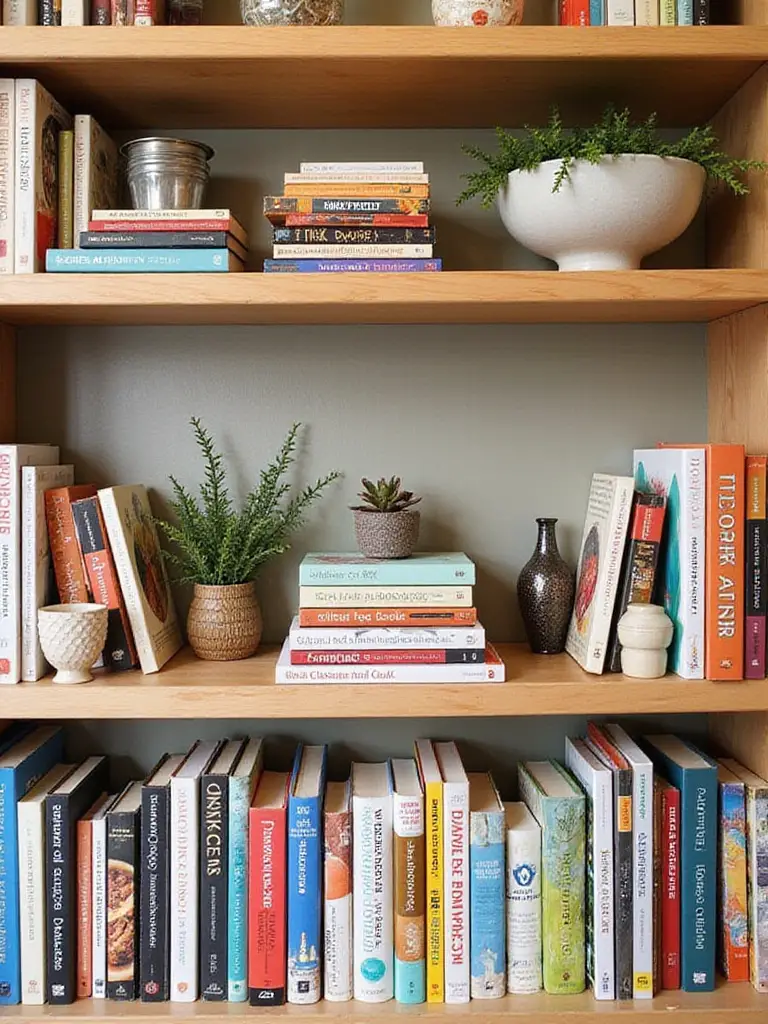
Group your most-used cookbooks together near your prep area. Don’t worry if the spines don’t match perfectly; their authenticity is their charm. You can stand them up, lay them in a horizontal stack to create a platform for a small bowl, or use a beautiful one as a backdrop, leaning against the wall. They add color, personality, and genuine functionality.
Your cookbook collection is a direct reflection of your culinary soul. Let it be honest. The ones you truly love will always look better than a perfectly coordinated set you never open.
9. Utilize Decorative Baskets to Conceal Clutter Gracefully
Baskets are my number one shortcut for instant calm. They are the perfect tool for gracefully hiding the visual noise of everyday life. Got a bunch of tea boxes? A pile of mismatched snack bars? A tangle of charging cords? Put them in a beautiful basket. Problem solved.
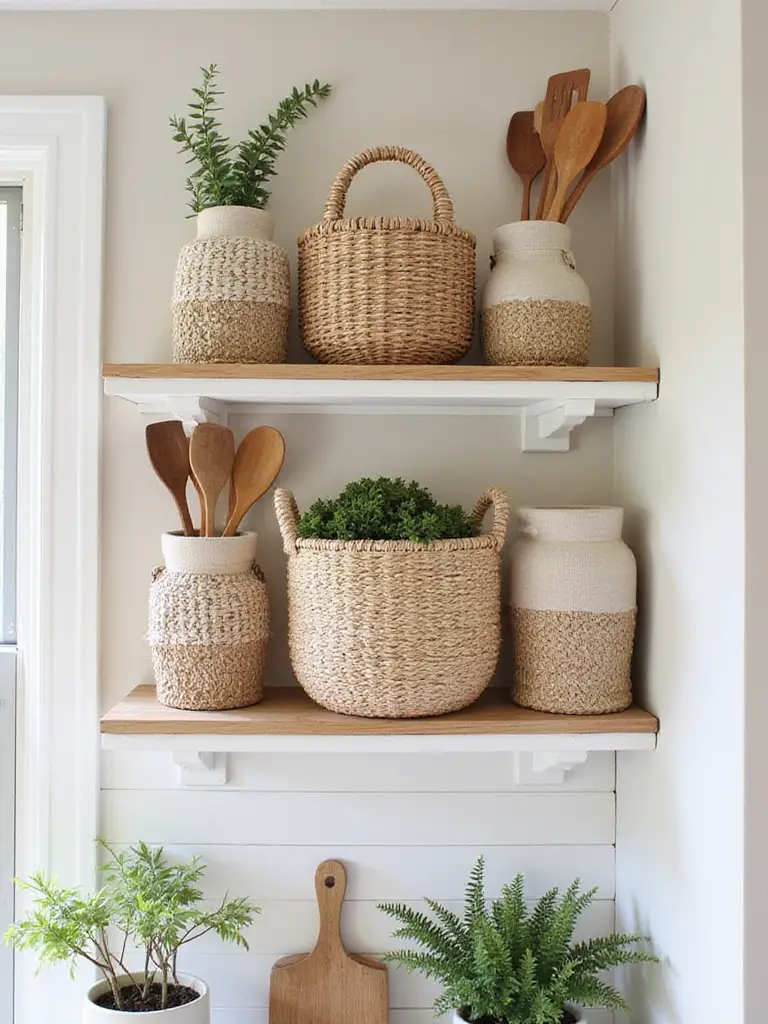
Woven baskets made of natural materials like seagrass, water hyacinth, or rattan add incredible texture and warmth to a shelf, balancing out all the hard surfaces of ceramic and glass. They break up the lines and add an organic, earthy feel. On my own shelves, I have one basket for bread and crackers and another for all the little packets of seeds and spices that would otherwise look messy.
They allow you to have your clutter and hide it, too. By grouping all those little odds and ends into one cohesive container, you trick the eye into seeing a single, tidy object, bringing instant peace to your shelves.
Designing the Display: Principles of Arrangement
Now for the fun part. You’ve got your functional items, you’ve hidden the clutter, and you’re ready to arrange everything into something that feels like art. These aren’t strict rules, but rather gentle guides to help you create displays that feel balanced, dynamic, and pleasing to the eye.
10. Employ the Rule of Three for Visually Appealing Groupings
There’s some kind of weird brain magic to this, but it’s true: our eyes find objects arranged in odd numbers—especially groups of three—more appealing than even-numbered groups. It just feels more natural and less rigid. A pair of candlesticks can feel formal, but a group of three creates a dynamic little family.
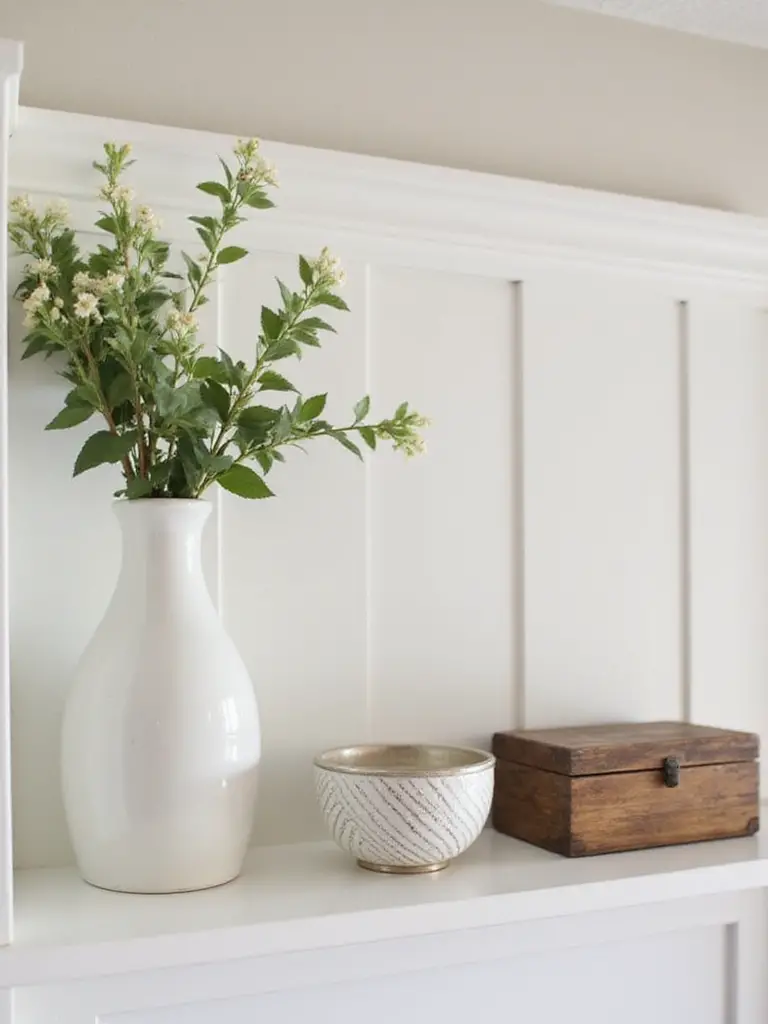
So, when you’re arranging things, try clustering them in small groups of three or five. The trick is to vary them. Don’t pick three identical mugs. Instead, pick a tall vase, a medium-sized bowl, and a short, fat candle. This trio of varying heights, shapes, and textures creates a “visual triangle” that keeps your eye moving and engaged.
It’s one of the simplest and most effective tricks in the book. Once you start seeing in threes, you’ll find it brings a sense of effortless balance to any surface you style.
11. Incorporate Varying Heights and Textures for Dynamic Interest
Imagine a garden where every plant is exactly the same height. Boring, right? The same goes for your shelves. A display where everything is lined up in a row at the same height looks flat and lifeless. The key to creating a dynamic display is to think like a landscape designer and create a ‘skyline’ of varying heights.
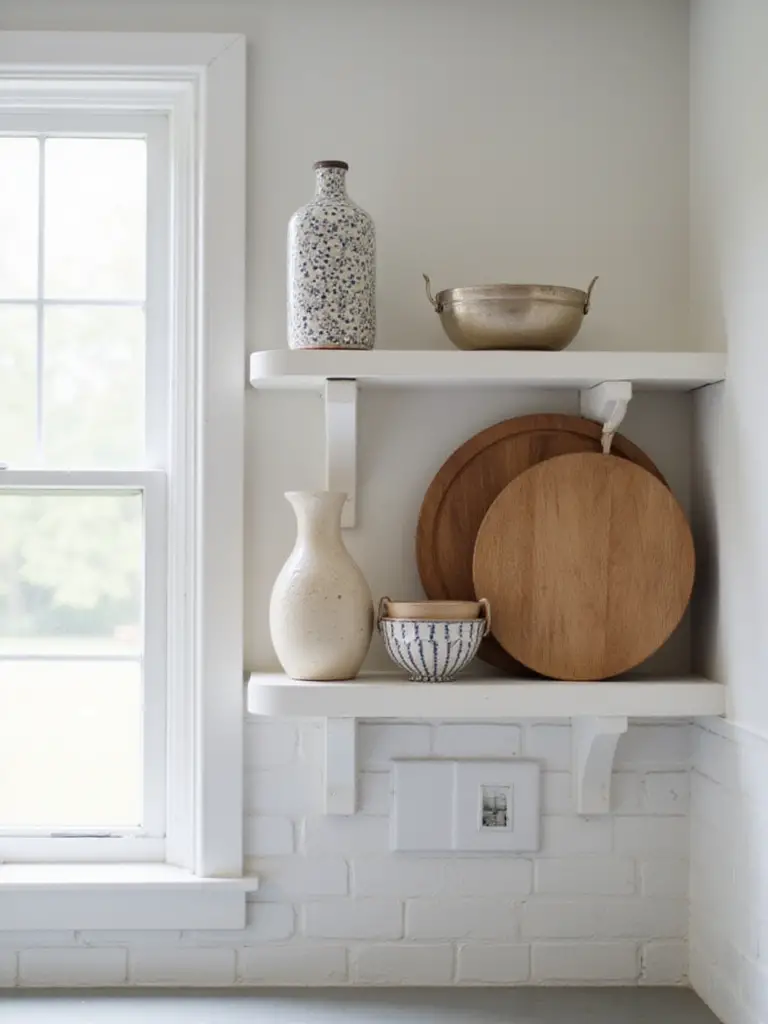
Stack some bowls. Lean a tall cutting board against the back. Place a trailing plant on a higher shelf so it can cascade down. Use a horizontal stack of cookbooks as a riser for a smaller object. This variation in height is what creates rhythm and flow, drawing your eye up, down, and across the display.
And don’t forget texture! Mix the smooth, cool feel of ceramic with the rough, warm texture of a wicker basket. Add the gleam of metal, the transparency of glass, and the softness of a linen napkin. This sensory mix is what gives a display richness and depth.
12. Leave Strategic Empty Space to Prevent Overwhelm
This might be the hardest lesson to learn, but it’s the most important. You do not have to fill every inch of your shelves. White space—or negative space—is a powerful design element. It’s what allows your beautiful objects to breathe. It gives the eye a place to rest and appreciate the things you’ve chosen to display.
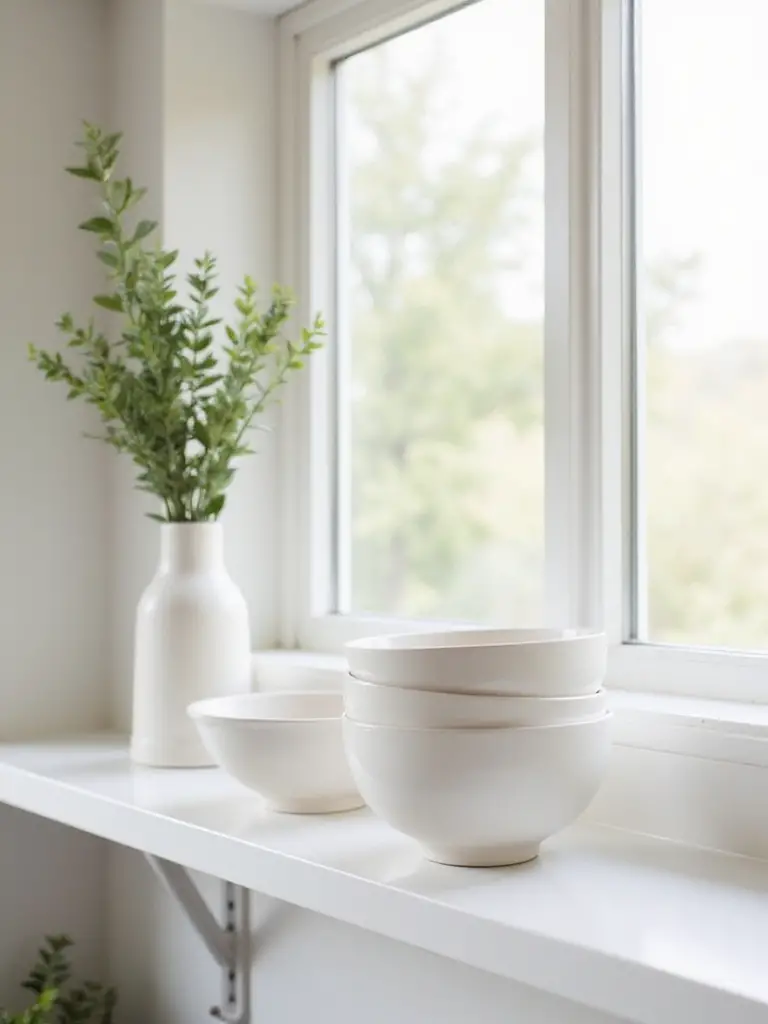
Overcrowding is the enemy of style. A few carefully chosen items will always look more sophisticated than a jumble of everything you own.
My shortcut for this is the “Squint Test.” After you’ve arranged a shelf, take a few steps back and squint your eyes until the details blur. You’ll instantly be able to see the overall shapes and balance. Does one area look too heavy and dark? Is it just a solid block of “stuff”? If so, take something away. You’ll be amazed at how removing just one item can make everything else look better.
13. Anchor Displays with Larger Items for Visual Stability
Every good shelf display needs an anchor. This is a larger, visually “heavy” item that grounds the whole arrangement and prevents the smaller items from looking like they’re just floating in space. It gives your eye a place to start and provides a sense of stability.
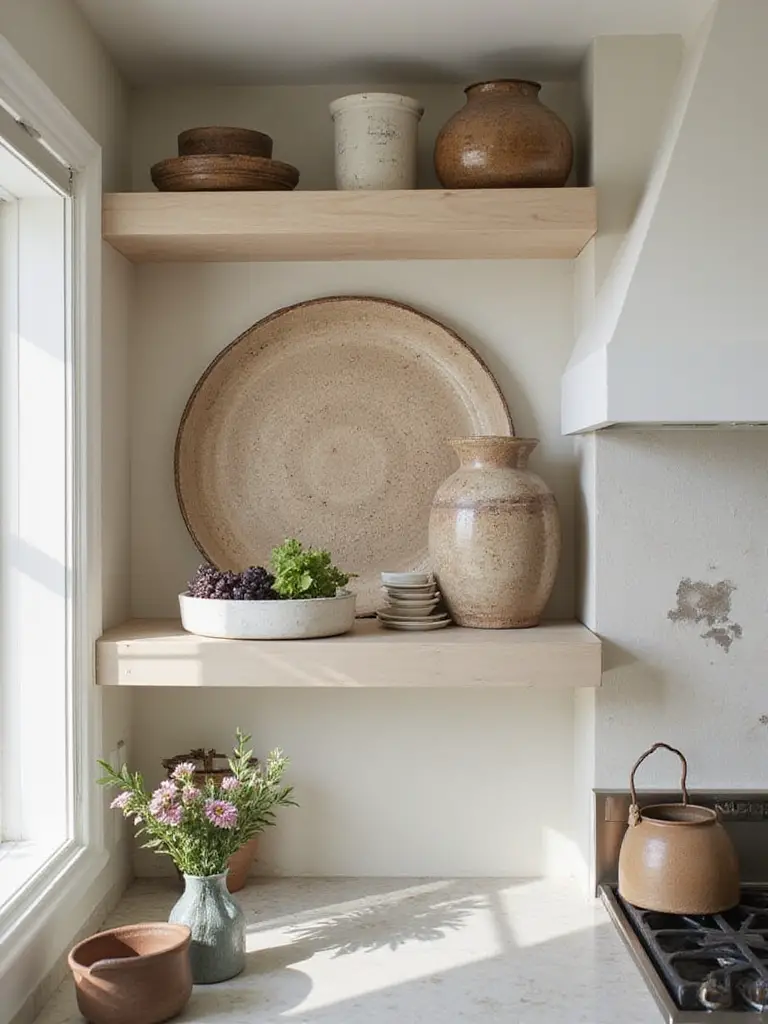
An anchor could be a big ceramic pitcher, a heavy mortar and pestle, a stack of your largest cookbooks, or even a statement piece like a large kombucha brewing jar. I like to place these anchors either in the center of a shelf or on one of the ends. Then, you can arrange the smaller, lighter items around it.
Without an anchor, a shelf can feel chaotic and flimsy. But with one, the whole display feels more intentional and pulled together, like it has a strong, confident center of gravity.
14. Style Horizontally and Vertically for Engaging Layering
This is how you get that rich, collected-over-time look. It’s about using the full depth of your shelf, not just lining things up along the front edge. Create layers by placing some items in front of others.
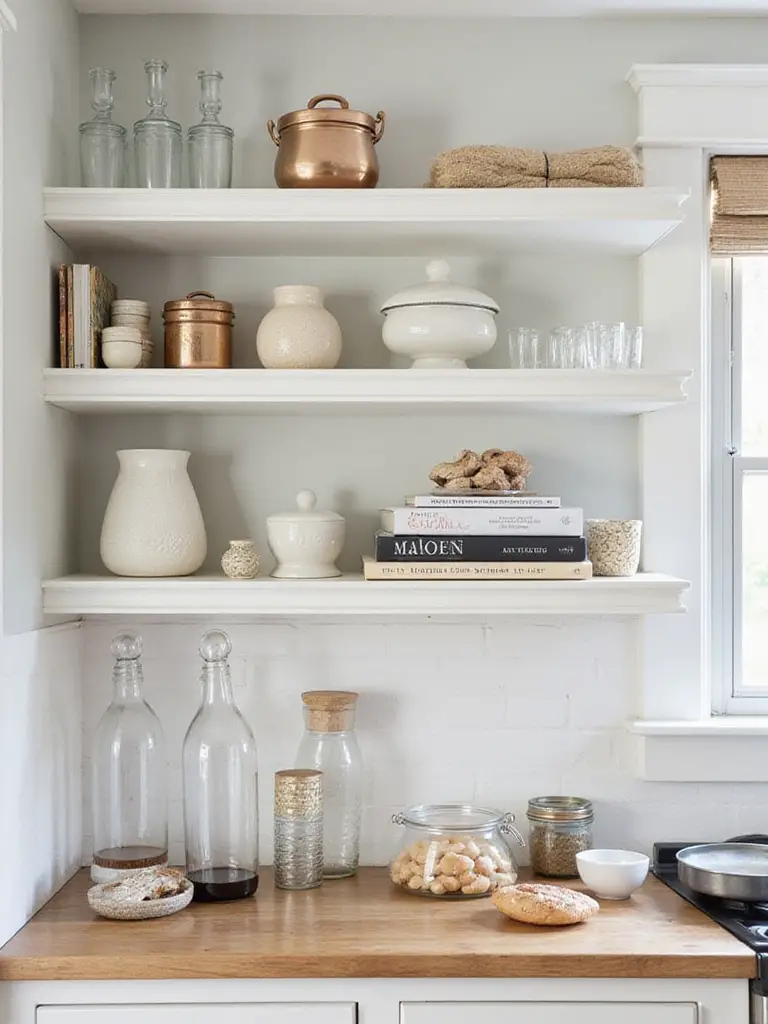
Lean a small piece of art or a beautiful plate against the back wall of the shelf. Place a shorter, wider bowl in front of a stack of vertically arranged plates. Overlap items slightly to create a connection between them. This is what adds dimension and makes a display feel lived-in and thoughtfully curated.
You’re basically creating small, overlapping scenes. This combination of vertical elements (like a stack of plates or a tall bottle) and horizontal elements (like a low bowl or a stack of books) creates a visual push-and-pull that is incredibly engaging.
Injecting Personality: Creative Decor & Thematic Style
Your kitchen should feel like your kitchen. This is where we go beyond the basic principles and start telling your unique story. Your shelves are the perfect canvas to showcase your passions, your history, and the things that make your home a home.
15. Introduce Greenery or Herbs for Fresh, Organic Vitality
If you do only one thing from this entire list, let it be this. Nothing brings a space to life like something that is literally alive. A pot of herbs or a small houseplant instantly infuses a kitchen with energy, color, and fresh, organic vitality. It’s the fastest way to bridge the gap between inside and out and make your home feel like a true ecosystem.
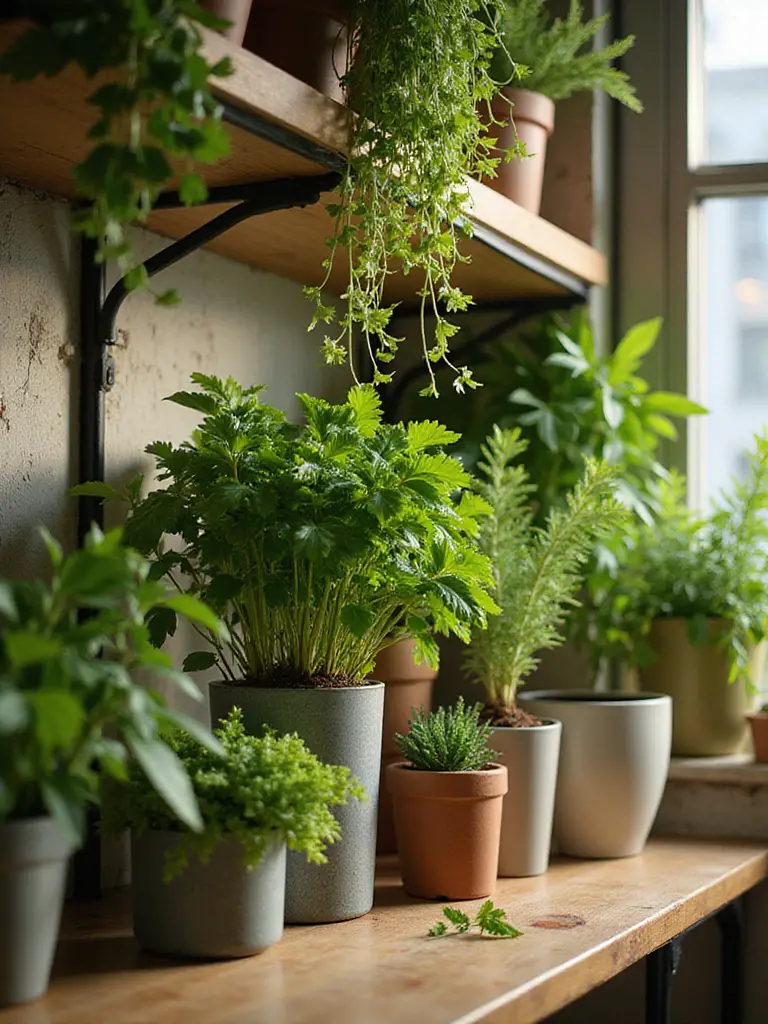
A small pot of chives, parsley, or mint on your shelf is not only beautiful, but it’s also incredibly useful. The joy of being able to snip fresh herbs for your cooking is unparalleled. It connects you directly to your food and makes the whole space feel more productive and wholesome. If you’re worried about light, there are plenty of low-light tolerant plants like snake plants or pothos that will thrive.
A little bit of green makes everything feel healthier, happier, and more intentional. It’s the soul of a productive living space.
16. Curate Thematic Vignettes Reflecting Your Personal Style
Instead of just having a random collection of items, try creating little “stories” on your shelves. A vignette is just a small, curated grouping of objects that share a common theme. This is where you can let your personality really shine.
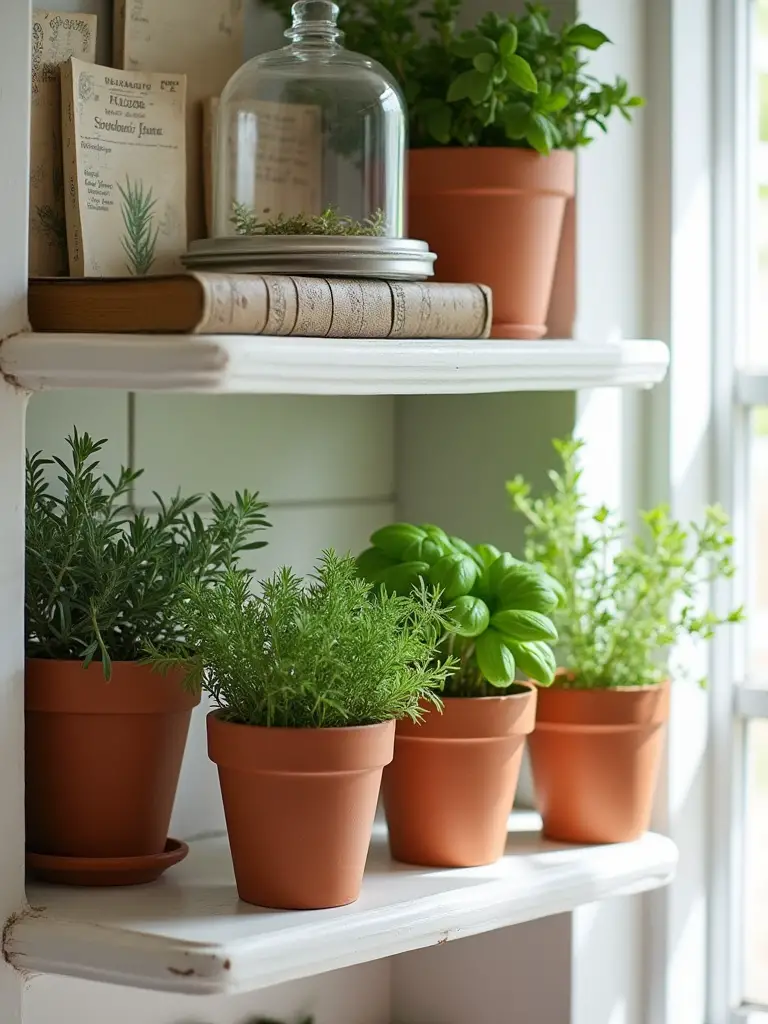
Are you a coffee fanatic? Create a coffee station vignette with your favorite mugs, a stylish coffee grinder, and a beautiful bag of artisan beans. Love to bake? Group your sourdough starter, a stack of vintage bowls, and a jar of flour. Maybe you want a “tea corner” or a “cocktail station.”
This approach turns a section of your shelf into a functional and beautiful little world. It’s a way of organizing that is both practical and deeply personal, transforming simple storage into a meaningful expression of your passions.
17. Add Unexpected Art or Photos for a Unique Focal Point
Who says art only belongs in the living room? One of my favorite things to do is to lean a small, framed piece of art or a personal photograph on a kitchen shelf. It’s an unexpected touch that instantly elevates the space and makes it feel incredibly personal and curated.
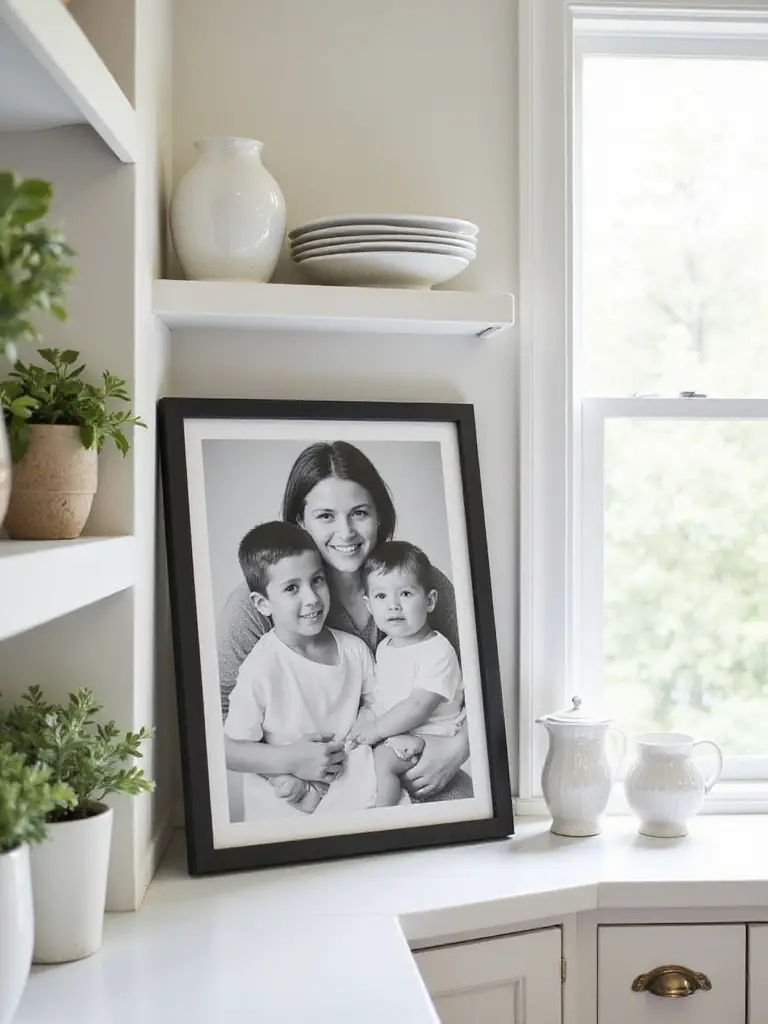
It could be a vintage oil painting you found at a flea market, a modern abstract print, or a candid black-and-white photo of your family. The juxtaposition of something artistic or sentimental next to everyday kitchen items creates a beautiful tension. It says, “this is a home, not just a workspace.”
It’s a small thing that makes a huge impact, turning a corner of your kitchen into a little gallery of things you love. It’s an immediate conversation starter and a daily dose of joy.
18. Utilize Stacking and Layering for Smart Space Optimization
This is the super-practical side of making your shelves work hard. Especially in smaller kitchens, you need to be smart about maximizing every inch. Stacking is your friend. Think vertically! Use shelf risers or wire racks to create a second level on a single shelf—perfect for doubling up on mugs or small bowls.
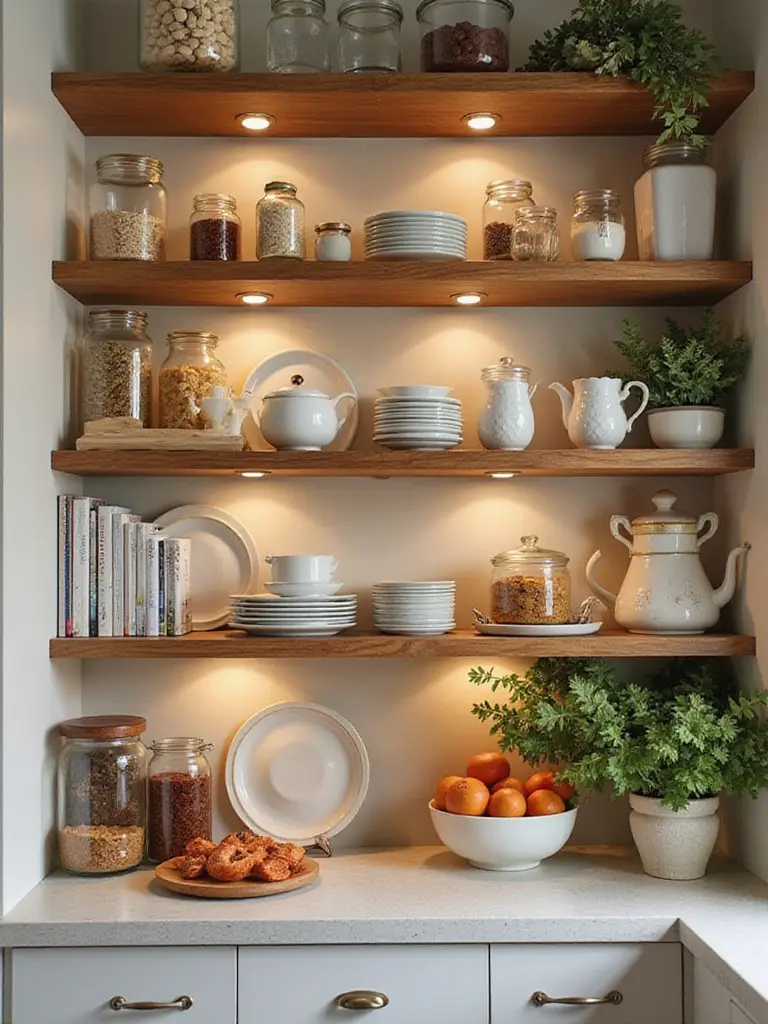
Stack plates and bowls neatly by size. Use canisters that stack securely on top of one another. This isn’t just about cramming more stuff in; it’s about creating an organized, accessible system that makes the most of the space you have. When things are stacked neatly, they look intentional and tidy, not chaotic.
This is the less glamorous side of shelf decor, but getting your storage systems right is what makes all the beautiful styling on top possible. A smartly organized shelf is a happy shelf.
Sustaining the Charm: Maintenance & Evolution
You’ve done it. Your shelves are beautiful, functional, and full of life. But a garden needs tending, and so do your shelves. These final tips are about how to keep that initial sparkle alive and allow your space to evolve with you over time.
19. Implement Under-Shelf Lighting for Enhanced Ambiance and Focus
We touched on this before, but it’s worth its own moment. If you can, add dimmable under-shelf lighting. It is a total game-changer, and it’s easier and cheaper than ever to do with modern LED strips.
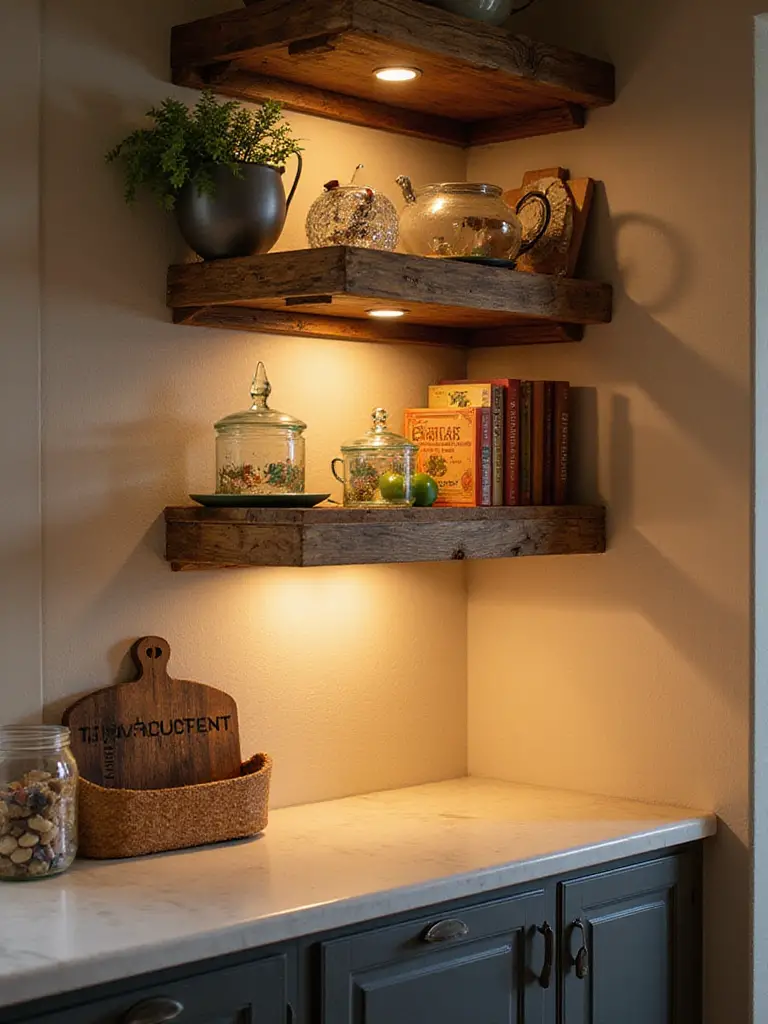
During the day, you can have it bright for task lighting. In the evening, you can dim it down to a soft, warm glow that makes your whole kitchen feel like a cozy, inviting bistro. It highlights the texture of your backsplash, makes your glassware sparkle, and creates an incredible ambiance.
It’s one of those “looks expensive” upgrades that has a massive impact on both the functionality and the mood of your kitchen. It takes your shelves from being just objects in a room to being an integrated part of your home’s architectural atmosphere.
20. Regularly Rotate Seasonal Decor to Keep Shelves Fresh
Your home should change with the seasons, just like the world outside. This doesn’t mean you need to buy a bunch of holiday-themed junk. It’s about subtle shifts that reflect the time of year and keep your space from feeling static.
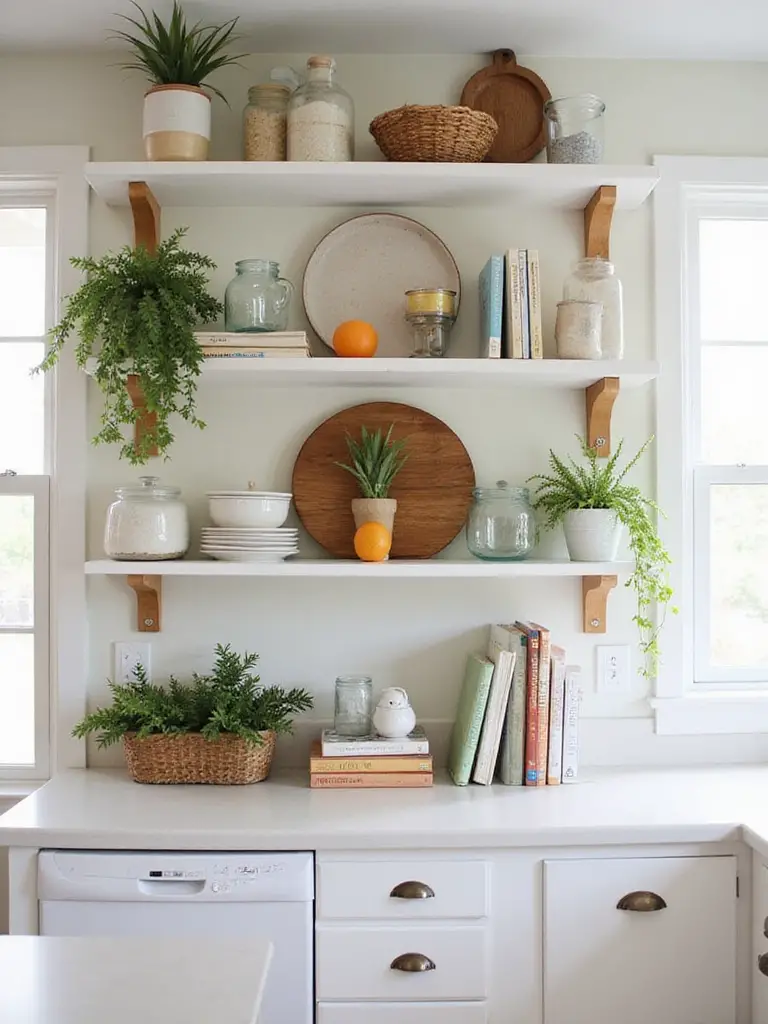
In the spring, maybe you bring out your sprouting jars and some pastel-colored bowls. In the summer, you fill a big pitcher with fresh flowers from the garden or a vibrant bunch of sunflowers. In the fall, you might display some decorative gourds or your colorful canning jars. In the winter, a simple garland of dried oranges or a few sprigs of evergreen can bring festive warmth.
This constant, gentle evolution keeps you engaged with your space. It’s a way of marking time and celebrating the present moment, ensuring your shelves always feel fresh, relevant, and alive.
21. Maintain Shelf Cleanliness to Preserve Display Sparkle
I’ll be blunt: a dusty, greasy shelf is never going to look good, no matter how perfectly it’s styled. Kitchens are workhorses, and that means open shelves will get dirty. A quick wipe-down needs to be part of your regular cleaning routine. It’s non-negotiable.
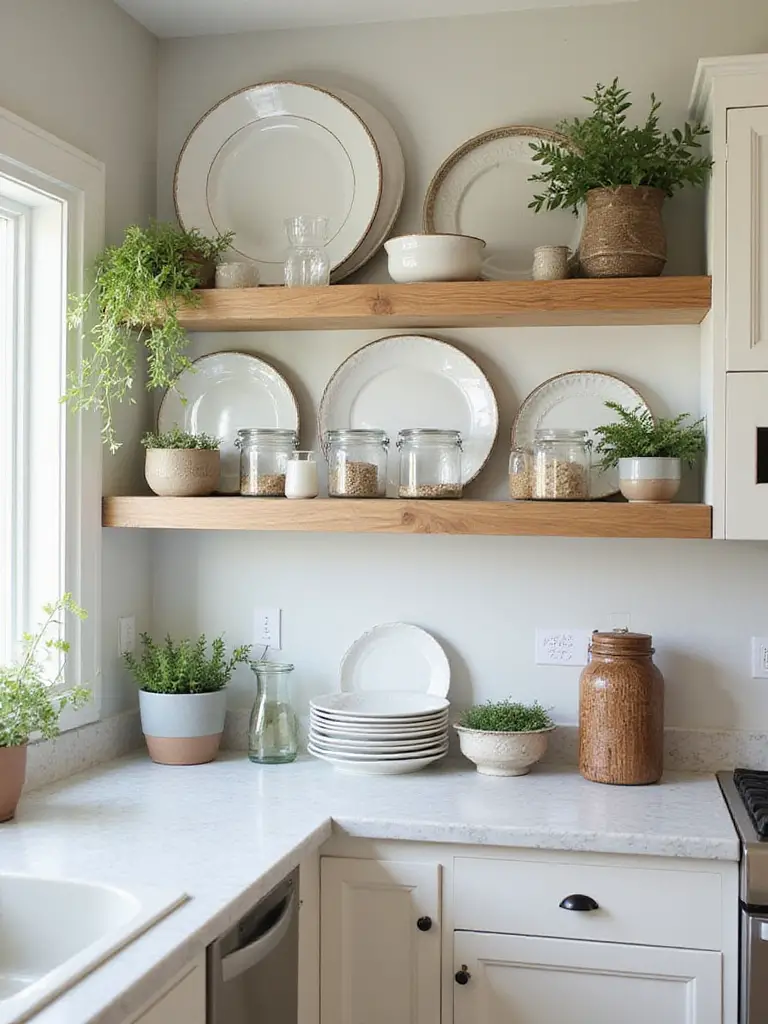
The shortcut here is to make it easy on yourself. Keep a small caddy with a microfiber cloth and a gentle all-purpose cleaner right under the sink. Give your shelves a quick dusting once a week, and tackle any splatters as soon as they happen. About once a month, take everything off for a deep clean.
It’s a little bit of maintenance, but it’s what preserves the sparkle and clarity of your display. A clean shelf lets your beautiful objects shine, and in a space dedicated to food and nourishment, cleanliness is beauty.
Conclusion
So there you have it. Your kitchen shelves are so much more than a place to stash your dishes. They are an opportunity to create a space that is a true reflection of you—one that is productive, beautiful, and alive. By blending the practical with the personal, and the functional with the beautiful, you can design shelves that work for your real life and bring you a deep sense of joy and calm every single day.
Forget perfection. Embrace the splatters on your favorite cookbook and the beauty of a simple pot of herbs. Your kitchen is the heart of your home; let your shelves show it. Start with one small change, one little corner, and watch how it transforms not just your space, but how you feel within it.
